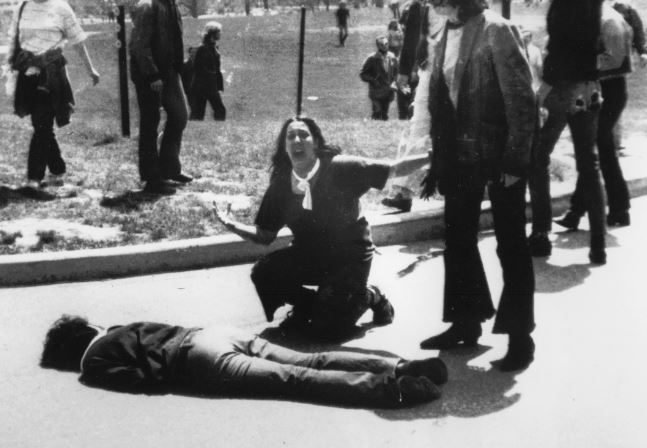I took this photo at an art gallery. I just really liked sculpture and the different textures and colors of it. Taken on iPhone 6.
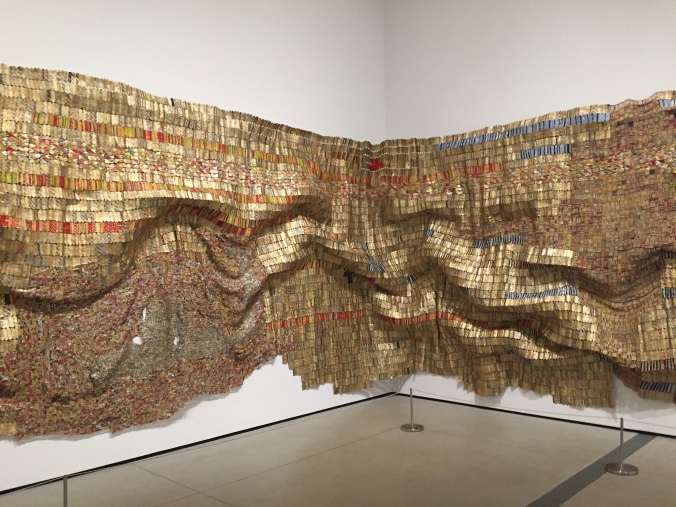
I took this photo at an art gallery. I just really liked sculpture and the different textures and colors of it. Taken on iPhone 6.

The opening sequence of the Simpsons is almost as popular as the TV show itself. The opener carries a familiar tune to all and leaves people humming along. Even after being on air for over 27 years, the opening sequence has been pretty consistent, aside from a few basic updates. In some episodes, however, the sequence does change to give the audience a little change and something to look forward to.
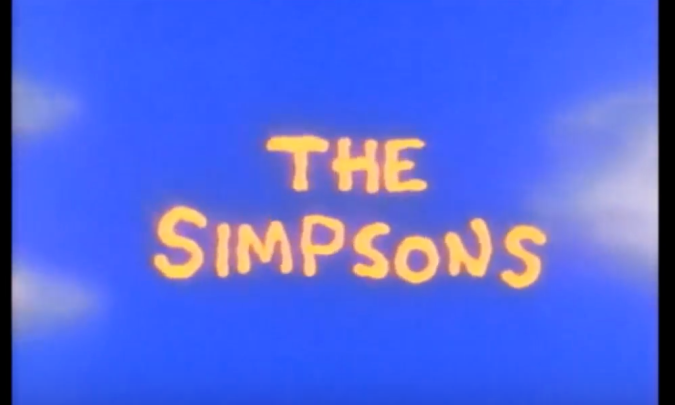
Since the Simpsons is an animated show, the entire sequence is animated. The opener starts off with a dolly into the header of the show and then pans over the entire town of Springfield, where the family lives.
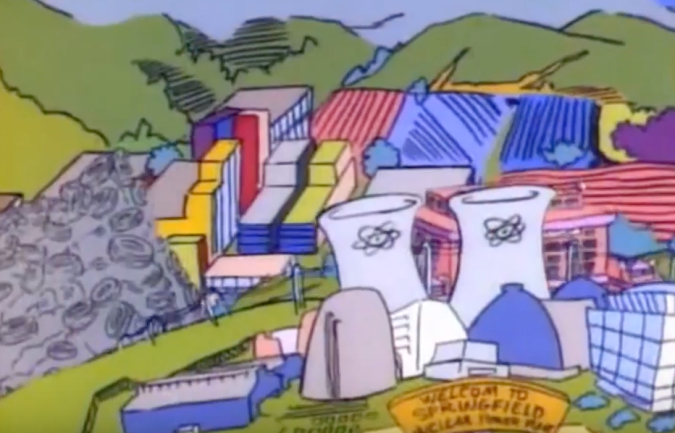
The camera then pans right and dollys forward to show the oldest child, Bart, writing on the chalkboard for punishment. The writing says, “I will not skateboard in the hallway” and this creates a line that points to Bart, the main subject of the screen. He is also the brightest color in the room, making him stick out the most.
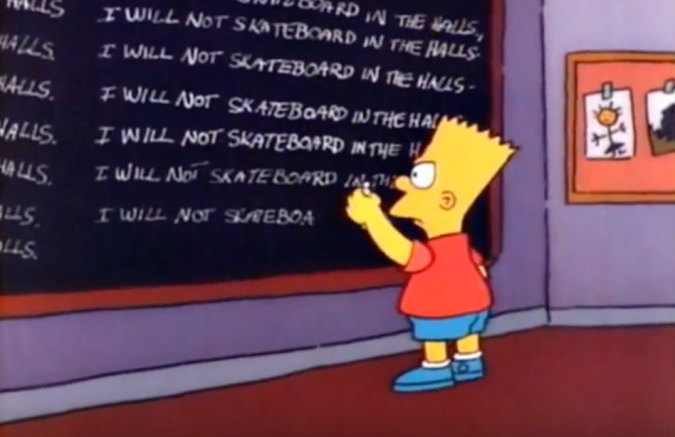
The camera dollys out and pans right to go towards the front of the school and then travels with Bart as he skateboards down the ramp and staircase.
After Bart, the camera goes to Homer’s work, the nuclear power plant, where he is seen with a bright green rod. He drops the object and it flies into the back of his shirt, which draws the viewer’s eyes towards Homer.
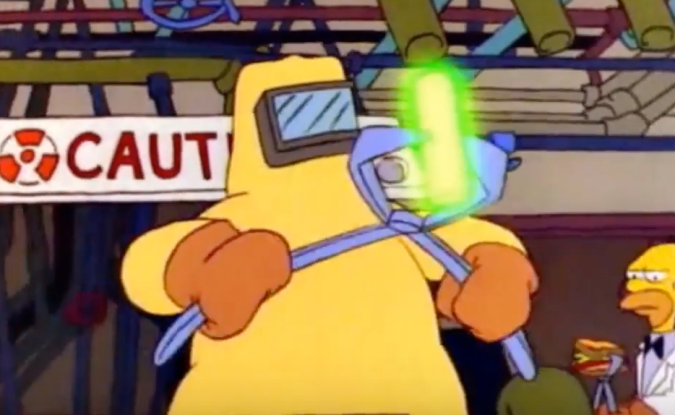
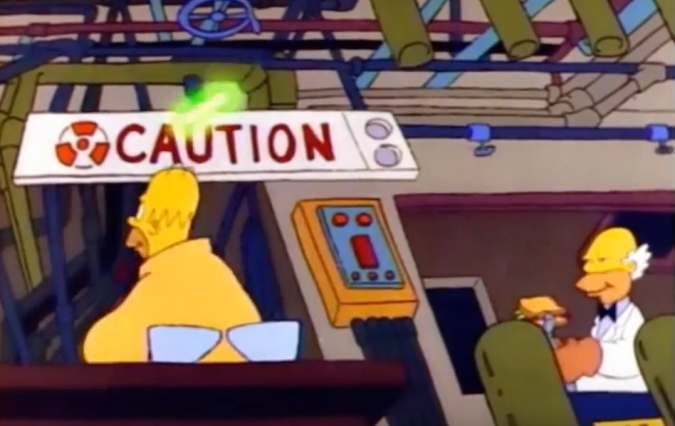
At the supermarket, Marge is looking at a magazine, while baby is on the conveyer belt at the check out stand. The camera tracks right to follow her down the belt and she ends up being placed in one of the grocery bags. From a low angle, you can see Marge feeling relieved once she realizes that Maggie is okay.
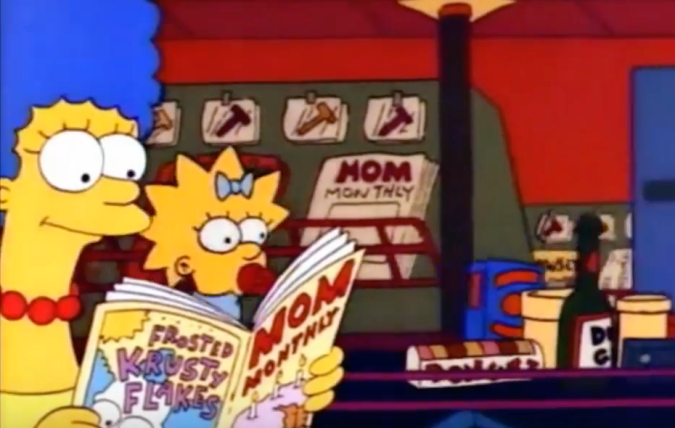
The scene then changes to Lisa who is in music class, the camera pans left to show Lisa playing the saxophone and then travels forward to follow Lisa out the door.
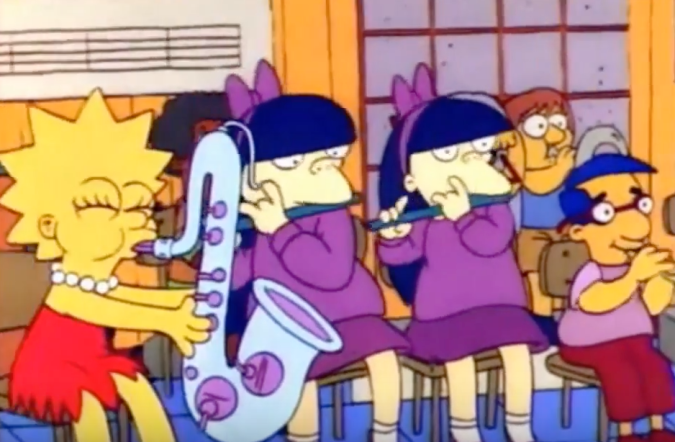
The green nuclear bar is seen bouncing across the screen helping to guide the viewers’ eye to the right, which brings Bart skateboarding past the screen. At this point, the camera treks right to see a group of people waiting at the bus stop. The bus passes them on the right, which leads them to run after it. This takes the viewer to the street where
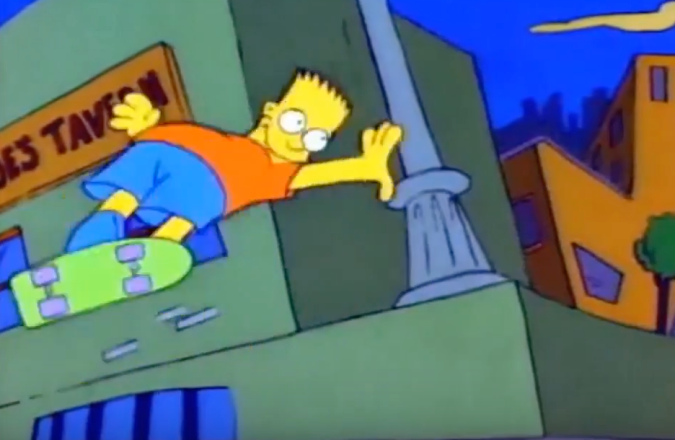
At this point, the camera treks right to see a group of people waiting at the bus stop. The bus passes them on the right, which leads them to run after it.
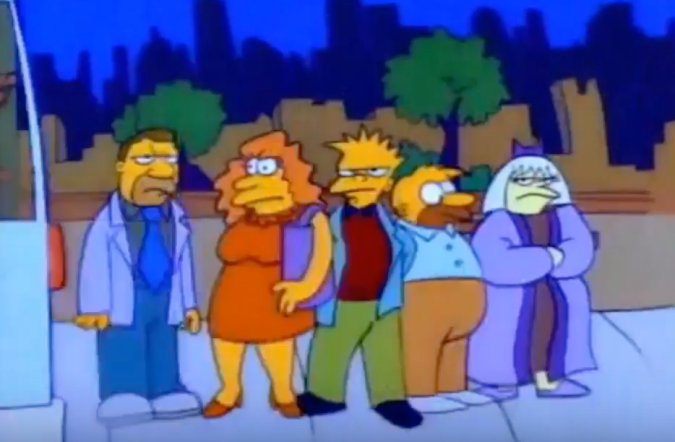
This takes the viewer to the street where the Marge’s car is driving by. The camera is focused on Maggie, and it looks like she is driving. However, the camera dollys out to reveal a wide shot of Marge actually driving the car.

There is a low angle shot of Lisa riding her bike home from school. Then the camera pans left to show another wide angle, this time of the Simpson’s house. The camera zooms in onto Homer’s car.
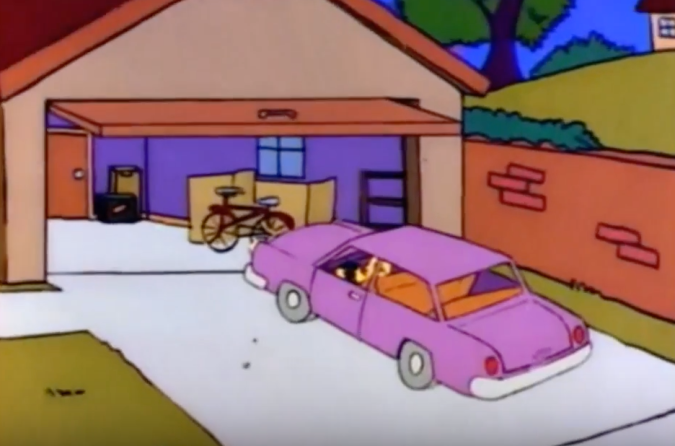
The camera changes to Marge’s point of view of her in the car. She almost runs into Homer, who runs inside, and leads the camera into their living room.
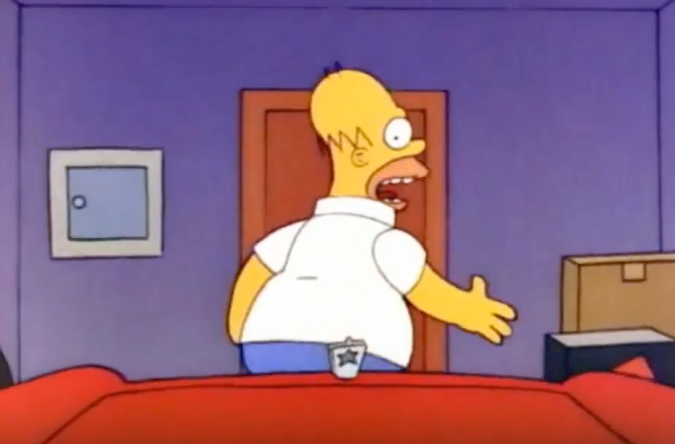
The sequence ends with a wide shot of the whole family sitting on the couch to watch TV.
This is a close up of my new puppy Nigel. I took this when I went home last week, I just thought it was a good representation of my life (and look how cute he is). Shot on iPhone 6.
Rear window begins with the credits playing in front of a window.Following the credits, the camera dollys in towards the window.In the following scene, the camera tilts down and pans right to travel with a cat moving up the stairs. The camera is at a high angle. The camera then tilts up and pans left to show an apartment complex. The camera continues to pan around showing people in their apartments or on their balconies.
The protagonist of the movie, Jeffery, is seen in a medium shot on the phone in a cast. The camera occasionally switches to his point of view to show what he sees when he looks outside. One time shows a low angle shot of a helicopter, there is another low angle shot that shows two girls swimming. In a wide shot, Jeffery watches dancer in her kitchen practicing.
While looking out the window, the camera pans right to follow Jeffery’s neighbors and then moves left to follow the man once he walks into the apartment.
After Jeffery’s nurses comes to help him, Jeffery falls asleep and wakes to find his girlfriend in his apartment. When she walks in, the camera does a close up on her face. It then moves to an extreme close up of both her and Jeffery kissing. The close-up shot continues while they talk.
After a while, the two of them begin to drink wine in a medium shot. The background is out of focus, but you can still see two figures in the window across the courtyard. It looks like they are dancing, and then the man leaves.
The scene moves on to show Jeffery looking out the window at his neighbors. The wife is seen setting up a nice dinner with wine and candles for herself. It is then shown that she is eating alone and pretending to have dinner with her husband. The camera continues to pan and travels back and forth on her.
In another apartment, a man is shown bringing dinner into his wife, she dismisses the flower he gave her and the camera pans left to show her husband on the phone.
Next, Jeffery and Lisa are debating about fitting into different classes and whether she should stay with him. During this scene, the camera does over the shoulder shots to show the conversation between the two of them. Towards the end of their argument, the camera focus on just one of them, and does a close up of her as she is standing up. With Jeffery, the camera is at a medium shot to show the top of his wheelchair. After Lisa angrily leaves, Jeffery goes back to look out the window. He suddenly hears a scream and glass break, but does not know where it came from.
He sees the man who made his wife dinner leave very late with a suitcase and then return later in the morning. The man then leaves again with the same outfit and suitcase – all of the blinds in his apartment are closed. The camera pans right to show the man returning once more and then leaving again.
The next morning the complex is lively with people and activities. The camera tilts up and right to show everyone in the area and then tilts down to show the bottom of the courtyard.
Jeffery finds the salesman suspicious, so he uses his binoculars to get a closer view. Instead of a wide shot on the suspicious neighbor, the camera now has a medium shot on him. However, this was not close enough for Jeffery, who decides to use his camera lens to get an even closer look. He finds the man wrapping up two long knives.
The next day, Jeffery begins to question and obsess over the man. There is a brief close up shot of Lisa and Jeffery talking and kissing. He continues to talk about the potential murder and with a wide shot and pan right, the camera goes over to the neighbor’s apartment and follows the man walking throughout his apartment. Jeffery is convinced the man murdered his wife, while Lisa tries to convince him otherwise. However, Lisa looks through the window at the right time, to see the neighbor wrapping up a suitcase. The camera zooms in on Lisa’s face and is finally convinced that Jeffery may be onto something.
After speaking with the police, Jeffery is determined to continue watching the man and solve the mystery. Through his camera lens, Jeffery sees an up-close shot of the neighbor. He is going through jewelry and rings and calls someone on the phone about them. In a medium shot, you can see Lisa walking in the door and talking to Jeffery about the possible reasons the man had all of the wife’s jewelry.
Later on, Jeffery and Lisa are able to convince the nurse about the possible murder. In a bird eyeshot, the three of them write a letter to the neighbor. The camera zooms in on the letter, which reads, “What have you done with her?” and Lisa delivers it. In a wide shot, there is a suspenseful scene where the neighbor tries to chase her and find her after she drops off the letter.
While looking in the binoculars, the camera goes to the neighbor who is seen in medium shot packing a suitcase. The camera goes back to the three of them in a medium shot looking through the window trying to figure out where he is going.
The nurse and Lisa go to dig up the flowers where the man may have planted something. In a high angle, wide shot, you can see the two of them going through and trying to find the evidence.
When Jeffery calls his friend to discuss the evidence, a close-up shot shows him on the phone trying to explain everything, what he does not realize is that the neighbor left while he was trying to call. Towards the end, the neighbor comes to confront Jeffery, and in a mixture of low angles and medium shots, a fight scene occurs that leaves to him trying to throw Jeffery out the window. The movie ends with the camera panning again through the apartments showing the neighbors.
Sorry – Beyonce
For the first ten seconds of Beyonce’s “Sorry” music video off of her latest album Lemonade, the camera is in a fixed frame and just shows lights and then switches scenes to show people moving their feet on what seems to be a bus.
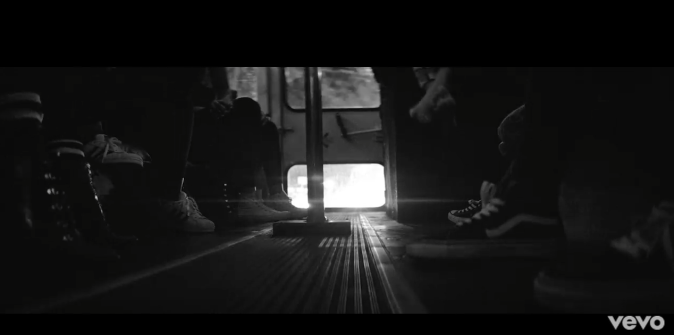
The camera continues to be in a fixed frame but jumps between the various people sitting on the bus. It also primarily uses a low angle perspective at this point.
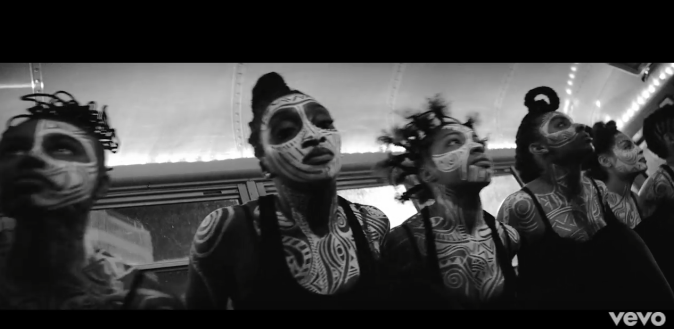
When Beyonce finally appears on the screen, the camera angle is still frozen with the camera being at eye level.
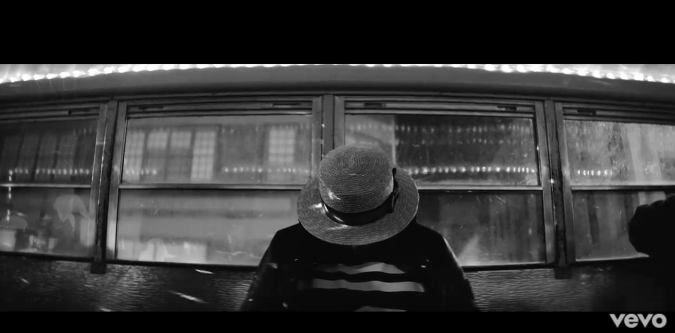
Then, it jumps to a high angle with the frame still fixed. The camera begins to pan right, around the 48-second mark where it pans across willow trees.
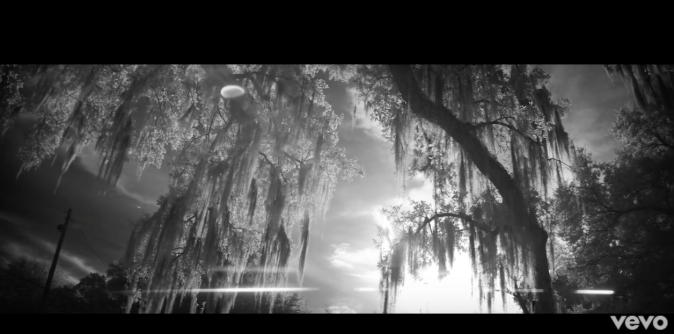
For the next scene, the camera dollies in towards an old looking home.
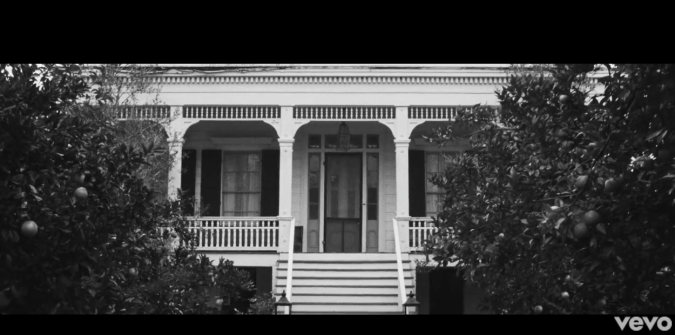
In the following scene, it continues to dolly in, this time very low to the ground on the porch of the home with a slight pedestal upwards.
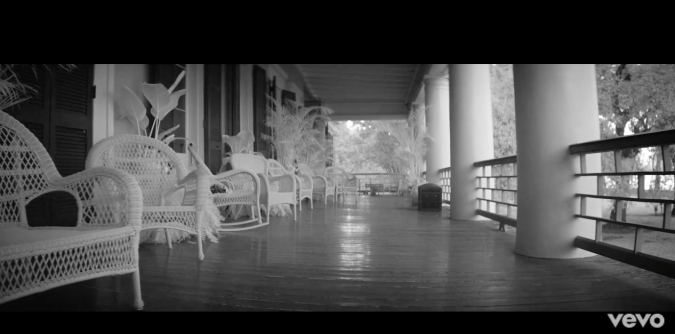
Once inside the home, the camera moves to a Dutch angle and pans left across a wall and past a doorway where you can see two women sitting on chairs inside the room.
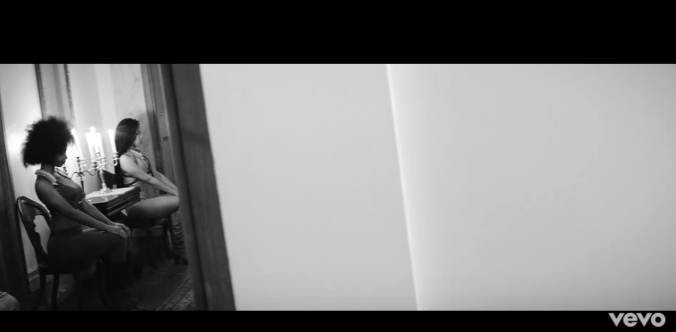
The camera continues to pan left in the following scene and then dollies in with a low angle, to show someone walking down the stairwell.
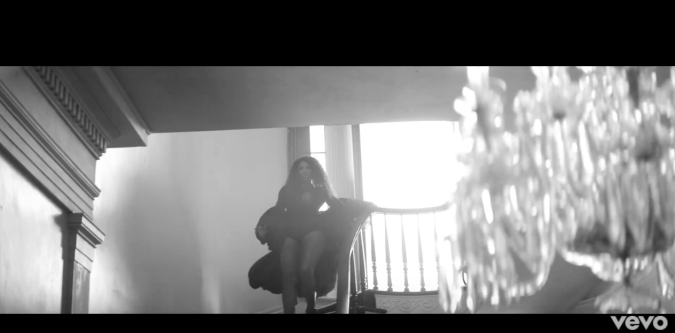
Next, the camera travels and follows the main subject down a hallway by using a dolly.
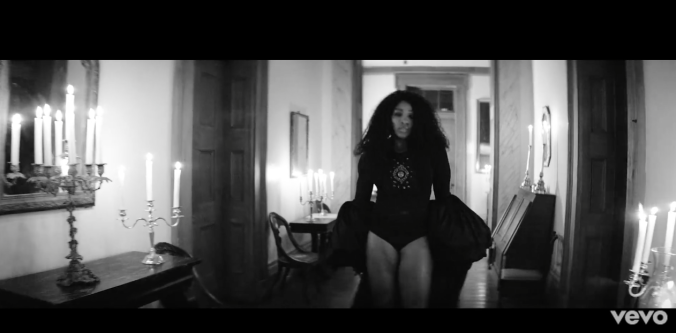
From this point on, the camera continues to dolly in on through the hallway and onto Beyonce, who is sitting on a chair at the end of the room. It also pans right and dollies out to capture another subject dancing next to her.
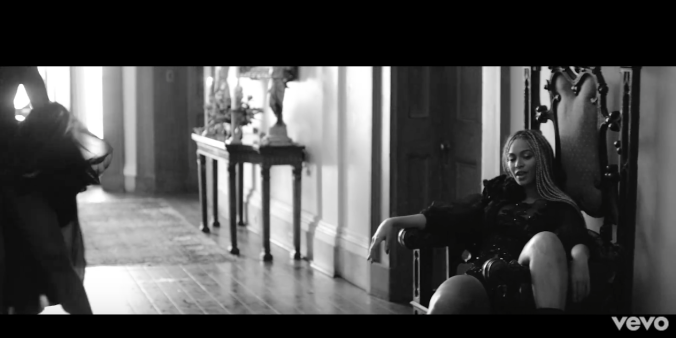
When the video goes back to the girls on the bus, the camera is continuously moving by either panning left and right or dollying in or out. In every scene on the bus, the camera slightly moves up and down to imitate that the bus is moving.
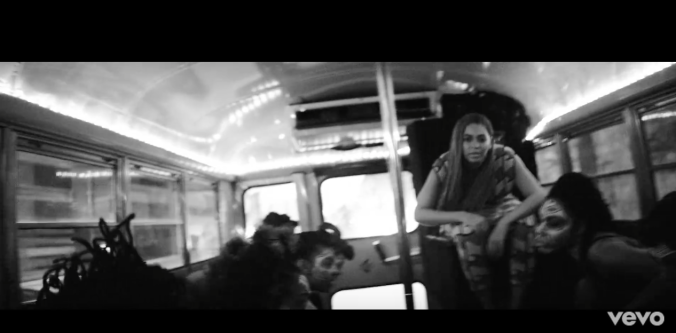
The camera is also at eye level to help give the idea that the viewer is part of the video and is one of the members in the scene. This is further emphasized by Beyonce looking directly into the camera as if she was referencing the viewer throughout the song and singing directly to them.
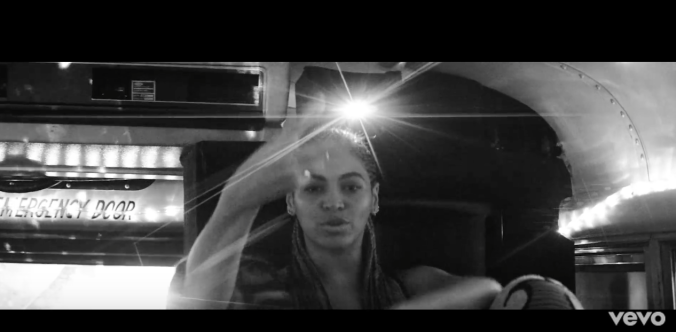
The camera also periodically uses Dutch angle while panning to emphasize the girls’ dancing.
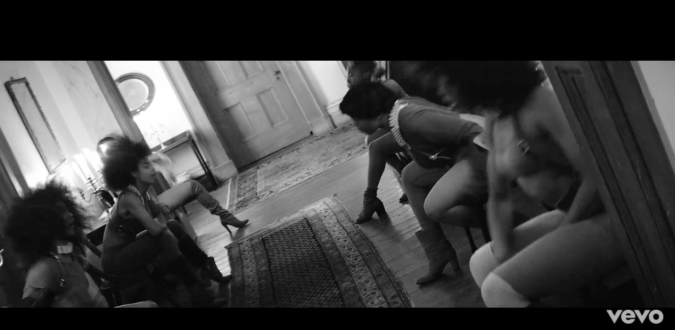
When Beyonce is sitting posed on the ground, the camera dollys in and out to highlight her dancing and focus on her movements. Since these shots are also at eye level, it allows for Beyonce to once again look directly into the camera and have her sing straight to the viewer.
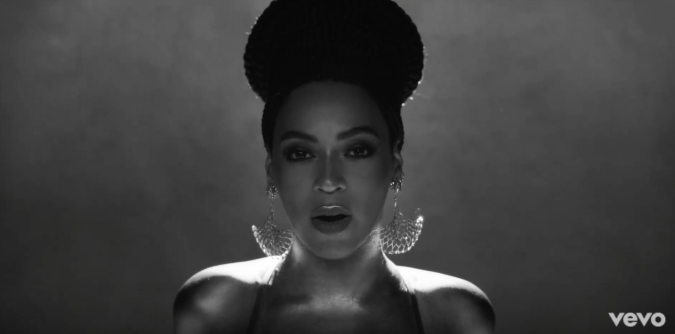
Overall, this music video is mostly at eye level and therefore there was really no craning involved. The video also lacked zooming in or out. For the most part, the camera either dollied in or out or panned left or right. These angles and movements, along with the Dutch angles make up the majority of this music video and helped create the impression that the viewer was apart of the video.
Low angle view of buildings in New York City. Taken on iPhone 6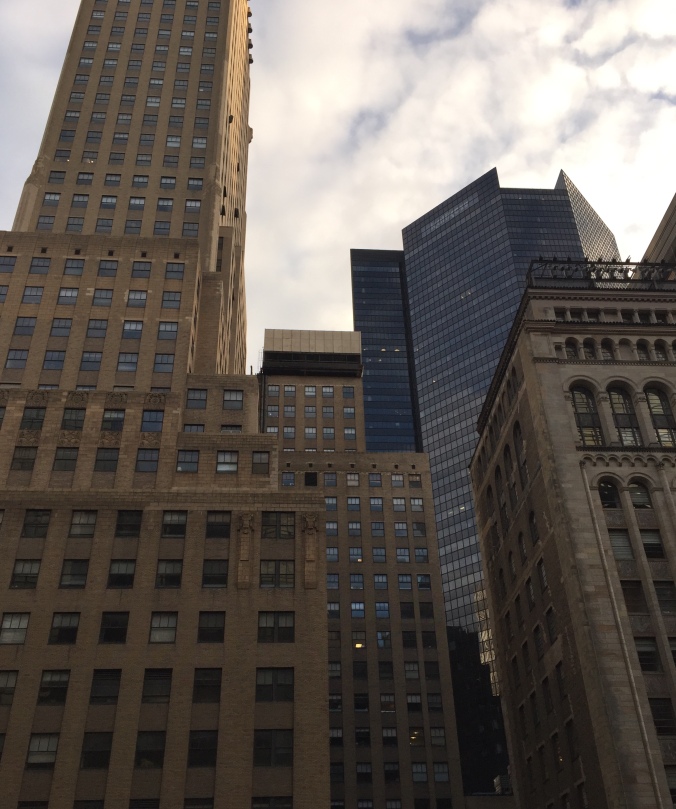
This commercial aired in 2010 and featured Beyoncé, Britney Spears, and Pink as gladiators in a Roman Coliseum. Enrique Iglesias also stars as the antagonist forcing the three ladies to fight. While the girls are waiting to go into the ring, they begin to start the beat to “We Will Rock You” by Queen. As they walk out, the crowd begins to chant and they throw down their weapons and start to sing. While they are singing, cans of Pepsi begin to fall from the stadium. The commercial ends with Enrique falling into the stadium and most likely meeting his doom by being eaten by a lion.
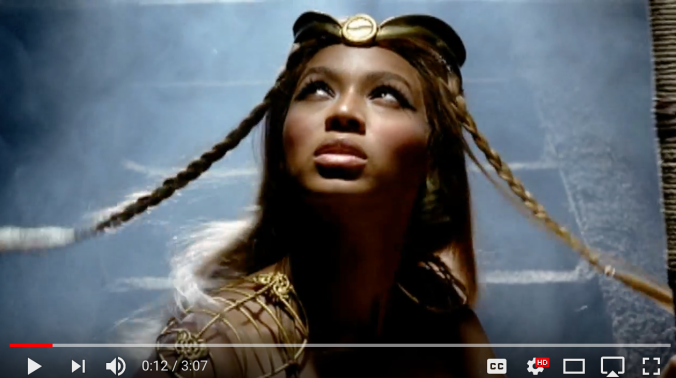 The commercial begins with a shot of the stadium. This aerial shot at the beginning helps to set the stage of the commercial by showing the stadium and where the scene is taking place.
The commercial begins with a shot of the stadium. This aerial shot at the beginning helps to set the stage of the commercial by showing the stadium and where the scene is taking place.
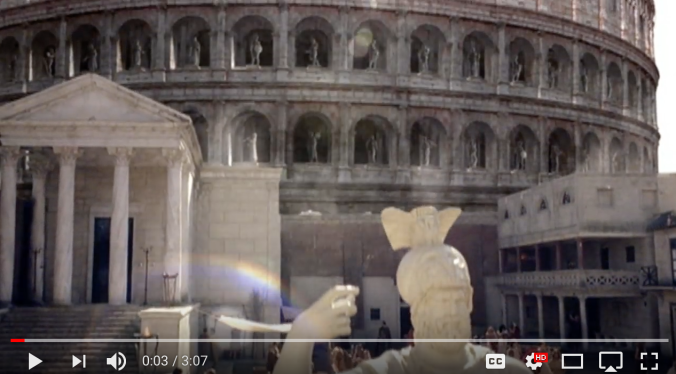
For the most part, the camera changes between panning and tilting. The panning helps show the different key players in the commercial and help the viewer get a sense of what is going on. For example, the panning helps show that the three women are in the stadium and the camera pans to show each one of them. The tilting of the camera helps show the size of everything. In the beginning of the commercial, the camera tilts to show the size of the stadium and statue to show how large they are. The camera also will tilt up to show Enrique looking down and them, giving him a sense of power.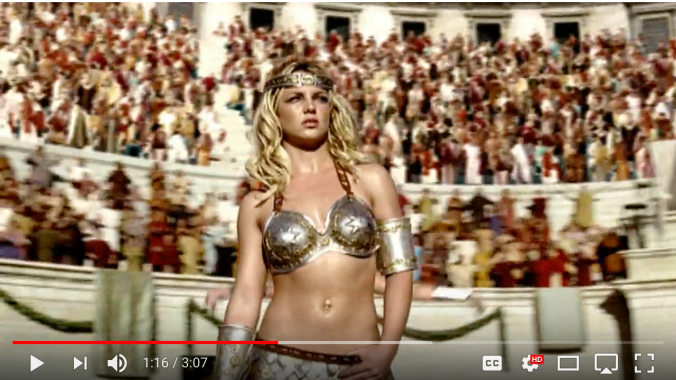
The camera angle’ also help give the women a sense of power as well by doing low angle shots. These shots help make the girls seem as if they are looking down at the viewers and gives them a confident, empowering feeling.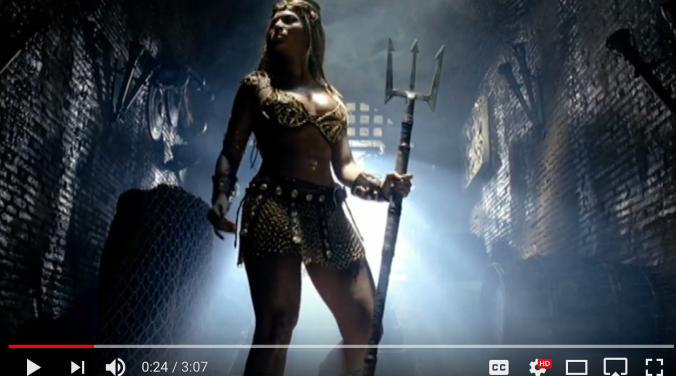
The camera also uses an arc shot when the subjects are circled while they are singing in the middle of the stadium. This, similar to the low angle shots, helps create the illusion of the girls getting empowered by one another’s singing and the cheers from the crowd.
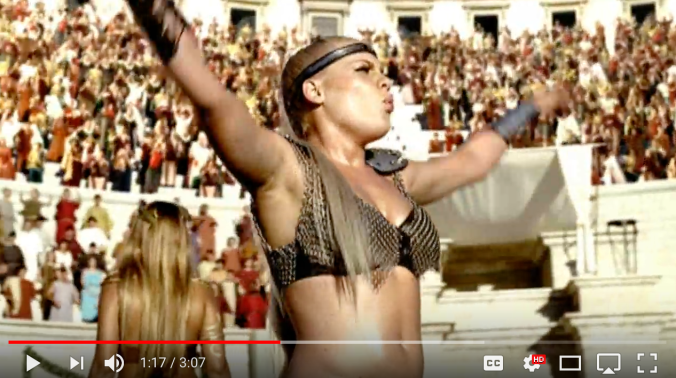
The camera is often at eye level as well to help give the impression that the viewer is either with the girls in the Coliseum, in the stands with the spectators, or even with the emperor. These make the viewers feel as if they are part of the video and not just watching it as an outsider.
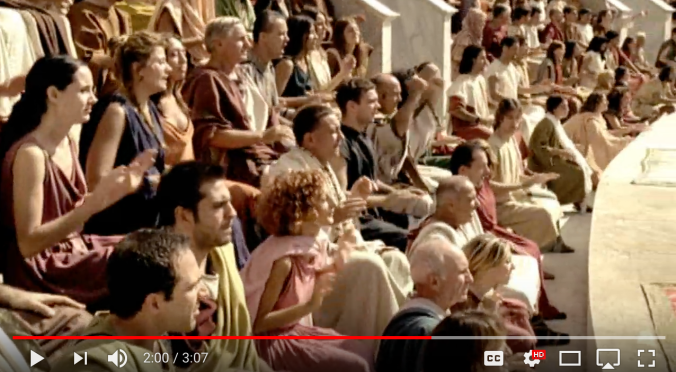 The camera also uses close up shots when it zooms into the main subjects faces. Since this video features such big artists, it was important to show their faces and make sure all of the viewers know who is in the commercial and to keep the audience engaged.
The camera also uses close up shots when it zooms into the main subjects faces. Since this video features such big artists, it was important to show their faces and make sure all of the viewers know who is in the commercial and to keep the audience engaged.
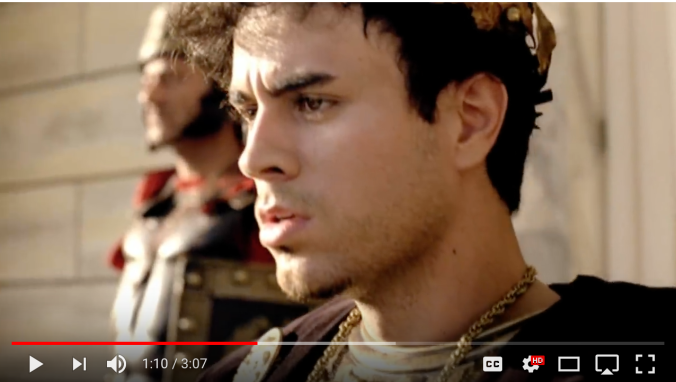
The camera also uses bird’s eye view angle to show the size of the stadium once more. By looking over the stadium, the viewer seems to be in a more powerful position and is able to show the action that is going on throughout the whole stadium, not just one small part.
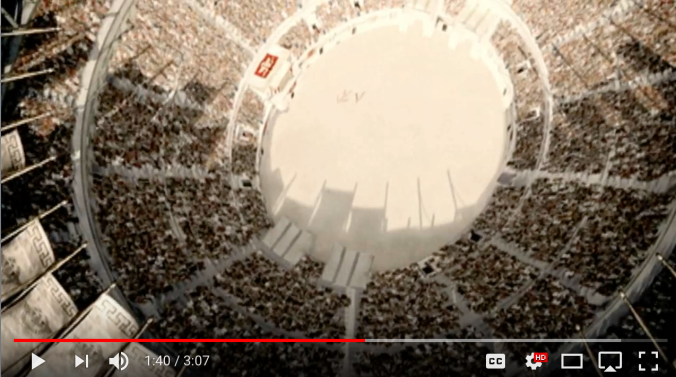
Word Photo 4. Extreme close up of cacti at Jrink Juicery. Shot on iPhone 6.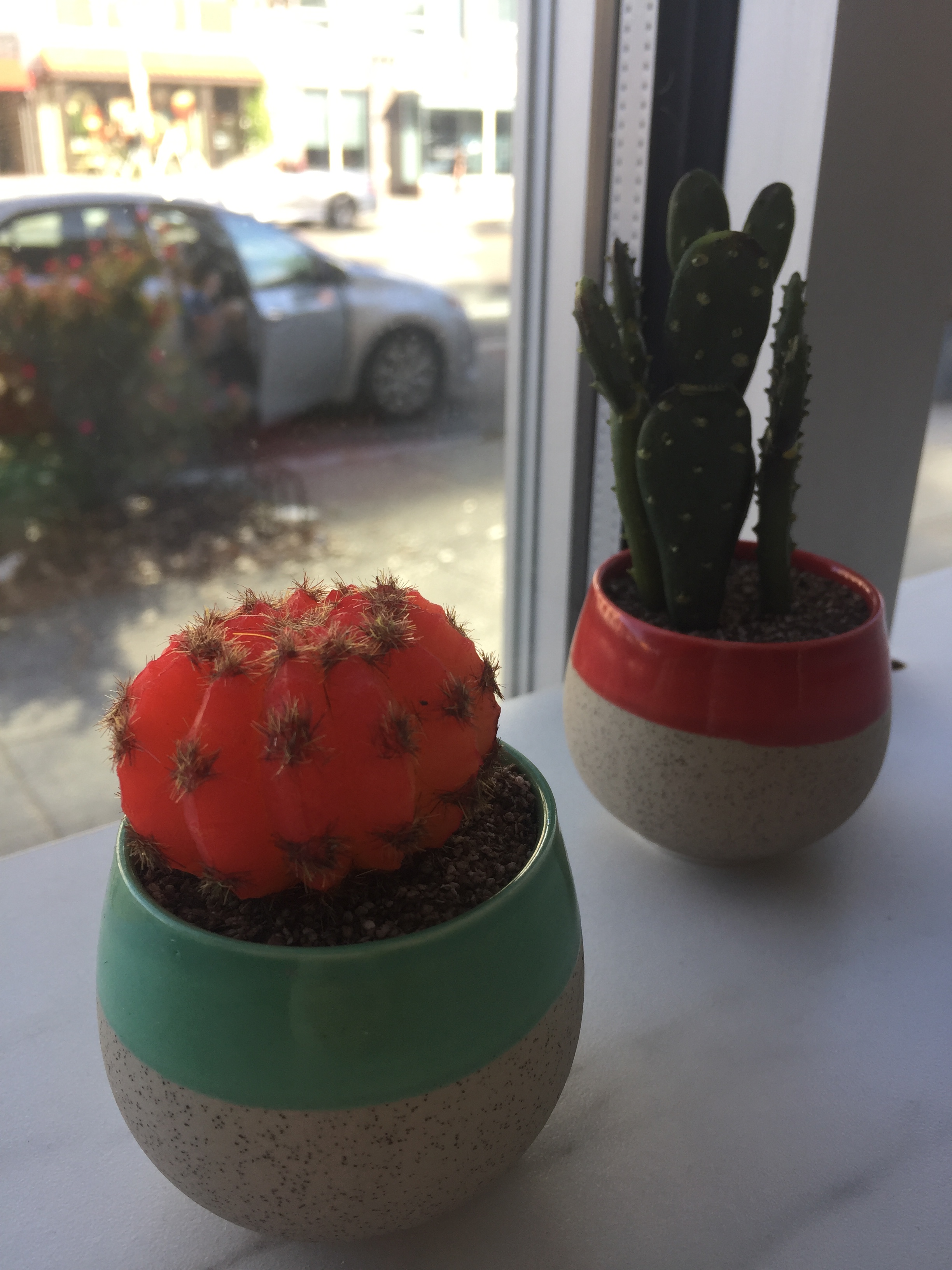
The Pulitzer Prize Photo I chose was titled Kent State and shot by John Filo on May 4th, 1970. Filo won the prize for his image in 1971. This picture was seen throughout the country as it encapsulated the anger and fear regarding the Vietnam War and the disconnect between the government and the youths in the late 1960s to early 70s.
John Filo was a student at Kent State at the time of the shooting. He was “just a student who wanted to be a photographer” when he captured the image that would mark the tension built during the Vietnam War. In 1970, students at Kent State University in Ohio were protesting the war. The National Guards were called to put a stop to the protests and eventually, the guards fired onto the student protesters killing four and injuring nine others. The photograph Filo shot was of a fatally wounded Jeffery Miller who was twenty at the time. Fourteen-year-old runaway Mary Ann Vecchio is seen kneeling over his lifeless body screaming. Interestingly, in many magazines, the original image was edited to get rid of a fence post that was behind Vecchio’s head because it was too distracting.
Filo used a Nikkormat with Tri X film and was exposing at 1/500s at f5.6/f8 to get this shot. He says that he knew it was important for him to be taking pictures of this event because no one would have believed that it happened if someone did not capture it- even though many students at the time thought he was being insensitive. He almost stopped shooting when he realized the bullets the guards were firing were real and not blank, but realized he was there to make sure what was going on was known.
The image has a wide depth of field, with most of the people in the photo being in focus. However, what draws the viewer to the main subject, Vecchio, is the reaction on her face. You can almost hear her cry simply by looking at her face. Especially since she was so young, she embodied the idea of this generation losing their innocence because of the Vietnam War.
The long shot of this image helps show what is happening in the background. People are walking around without much emotion on their faces, which is a big contrast compared to the emotion shown on Vecchio’s face.
This photo was also taken at eye level. This helps give the viewer the perspective that they are in the scene with the photographer. It gives a more personal approach to the image as well. It also helps create more emotion in the image. Since it feels as if you were with the students on the day of the shooting, it makes you have more sympathy for them and really evokes a reaction out of the viewer. You feel the pain and fear that is seen on Mary Ann’s face and it makes you think about Jeffery Miller’s family and the other family’s that were affected by the shooting. It really helps you understand the turmoil that was going on in America at the time.